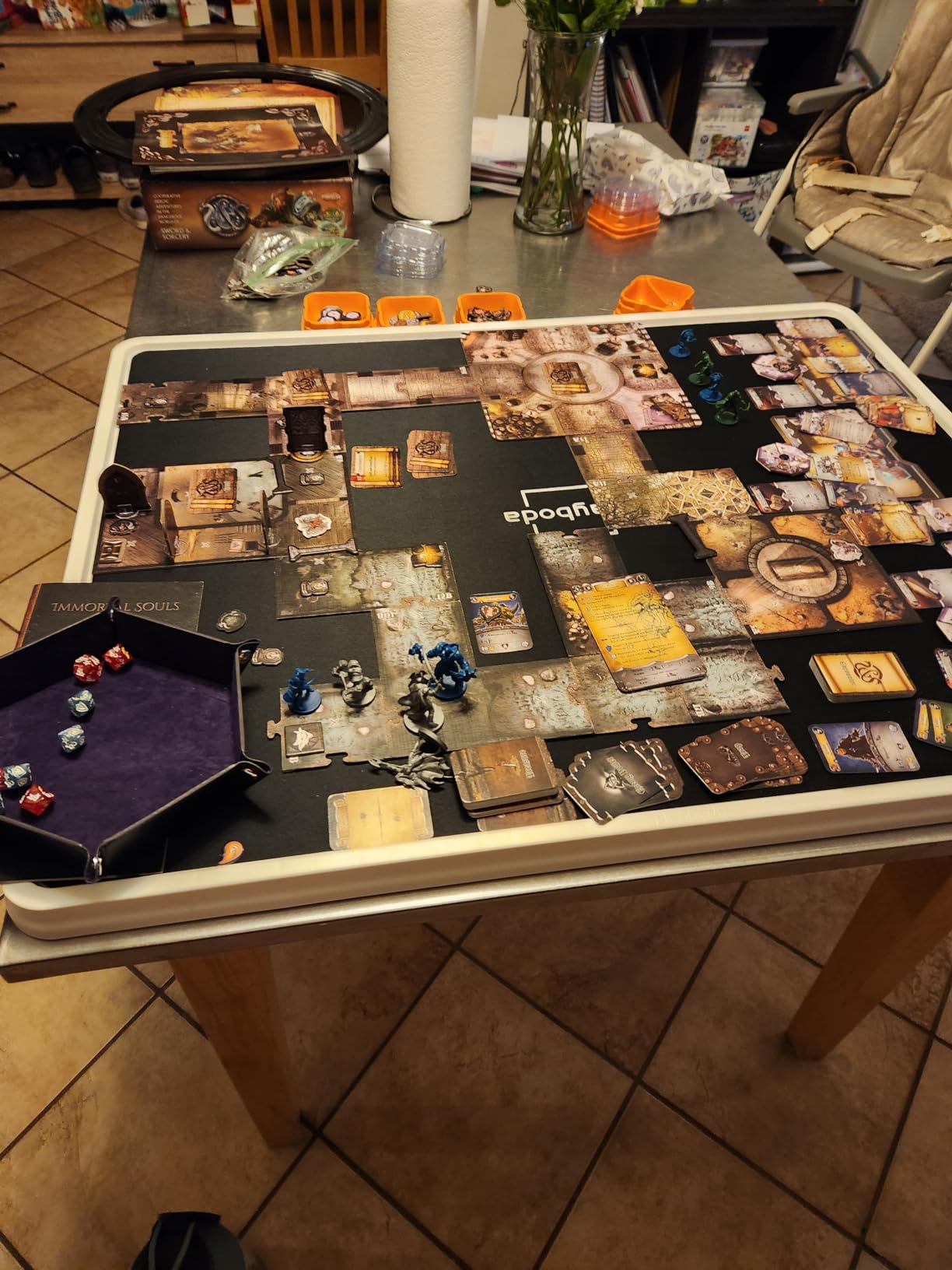
More Than Puzzles: Everyday Uses of a Puzzle Table
Why Puzzle Tables Exist
Puzzle tables started as a simple solution to a frustrating problem: there was never enough space to leave a puzzle out. If you’ve ever worked on a 1000-piece or 1500-piece puzzle at the dining table, you know the cycle. You spread out the pieces, get into the flow, and then—someone calls for dinner. Suddenly the puzzle becomes an obstacle, and every piece has to be packed up. The joy of puzzling collides with the reality of shared living spaces.
The invention of a puzzle table gave enthusiasts their own dedicated, portable surface. Instead of competing with the dining table or coffee table, puzzlers finally had a flat board they could claim. It was freedom: puzzles could stay in place overnight, and the dining room could go back to being a dining room.
But as many owners quickly realized, a puzzle table doesn’t stop being useful once the puzzle is done. It becomes a flexible, lightweight piece of furniture that adapts to daily life.

Beyond Puzzles: How People Really Use Puzzle Tables
Family Game Nights
One of the most common “second lives” of a puzzle table is as a board game table. Families use them for Monopoly, Scrabble, card games, and even chess. The drawers that once stored puzzle pieces are suddenly perfect for dice, cards, and game tokens.
A mother in Chicago shared her experience: “On Friday nights, we used to clear the dining table for board games, and then scramble to set up dinner afterward. Now we just pull out the puzzle table. When it’s time to eat, I lift it up and move it to the side. Nothing gets disturbed, and the dining table stays ready.”
That flexibility—simply moving the whole setup without disturbing the game—is what makes puzzle tables uniquely suited for families.
Casual Dining and Snacks
A multipurpose puzzle table also doubles as a dining surface. Some use it for afternoon tea, others for weekend snacks, and plenty of people admit to using it for dinner in front of the TV. Its portable size makes it easy to position anywhere in the living room.
The material matters here. Unlike wood, which stains easily, an ABS puzzle board wipes clean in seconds. Coffee, soda, or even spaghetti sauce can be cleaned off with a damp cloth. One user put it this way: “I spilled half my latte on the puzzle table last week. It didn’t even leave a mark—just wiped it off and kept working.”
For families with kids, this durability is priceless. A puzzle table can handle coloring books, juice spills, and sticky fingers without showing wear.
Work-from-Home Station
Since the pandemic, more people work or study from home. A puzzle table naturally steps in as a compact desk. The flat, neutral surface is large enough for a laptop and notebooks, while the drawers can hold pens, chargers, or Post-its.
The tilting models have another hidden benefit: ergonomics. Adjusting the angle reduces neck and shoulder strain, just as it does for puzzling. For people without room for a full office desk, a puzzle table provides a practical alternative. It’s lightweight enough to move around the home: near a sunny window in the morning, in the bedroom for focus in the afternoon, or by the couch in the evening.

Creative Projects and Hobbies
Puzzle tables also lend themselves to other hobbies. Diamond painting, Lego sorting, sewing, and model building all benefit from a dedicated, flat workspace. The drawers keep small pieces organized, while the cover (on some models) protects projects from pets or curious toddlers.
For one father in Texas, the table became a craft station for his kids. “They each got a drawer for their art supplies. They spread out paper and crayons, and when it’s dinner time, we just move the whole table to the side. No more picking up fifty crayons from the floor.”
This adaptability transforms the table into a family tool—not just a puzzler’s accessory.

Independent Space in a Shared Home
What really sets a puzzle table apart is that it creates a sense of independent space. In a home where surfaces are constantly claimed—dining tables, coffee tables, countertops—the puzzle table belongs only to you.
It’s not tied to mealtimes or chores. You can set it up by a window, in a quiet corner, or even in the bedroom. That personal corner becomes a place to focus, relax, and create, whether you’re puzzling, journaling, or sketching.
This sense of ownership resonates especially with people who crave a little solitude in busy households. A puzzle table becomes more than a tool—it’s a small sanctuary.

Material Matters: Why ABS Makes a Difference
Traditional puzzle boards were made of wood. They looked classic but were heavy, harder to clean, and vulnerable to warping. Modern puzzle tables often use ABS plastic, which changes the game:
-
Lightweight: Easy to move from dining room to living room.
-
Durable: Resistant to scratches and everyday wear.
-
Easy to clean: Coffee, tea, or paint spills wipe off without staining.
-
Long-lasting: Doesn’t warp like wood in humid conditions.
One customer summed it up: “The ABS puzzle board feels like something I can keep for years. It’s strong enough for my kids, light enough for me to move, and doesn’t need special care.”

Real-Life Scenarios
To make this concrete, here are a few everyday examples:
-
Game night moves: Family is playing a board game on the puzzle table. Dinner is ready. Instead of ending the game, you simply lift the puzzle table and move it aside. The game stays intact, the dining table stays free.
-
Coffee spill rescue: Working from home, you spill your morning coffee. On a puzzle table with ABS surface, a quick wipe leaves no trace. On a wooden table, it would stain.
-
Craft control: Kids are making paper crafts. Each drawer holds scissors, glue, and paper. When it’s bedtime, the whole table slides to the corner, ready for tomorrow.
-
Pet-proofing: With a fitted cover, the puzzle or craft project stays safe overnight, even with a curious cat in the house.
Everyday Value of a Puzzle Table
A puzzle table might start as a gift for a hobby. But in practice, it turns into a daily-use piece of furniture. It’s used for puzzling, yes—but also for dining, working, gaming, and creating. Its versatility, portability, and easy maintenance make it valuable far beyond its original purpose.
Instead of a single-use item, it becomes a multipurpose puzzle table—a small, adaptable surface that makes everyday life easier.
👉Multipurpose Puzzle Tables Collection
Gentle Call to Action
If you’ve ever felt your home lacked space for hobbies, or you’re tired of clearing the dining table for every activity, a puzzle table can be the solution. It’s light to lift, built to last, and ready to adapt to however you live.
👉 [Rotating Puzzle Table ] | [Tilting Puzzle Table ] | [2-in-1 Puzzle Table]

Share
